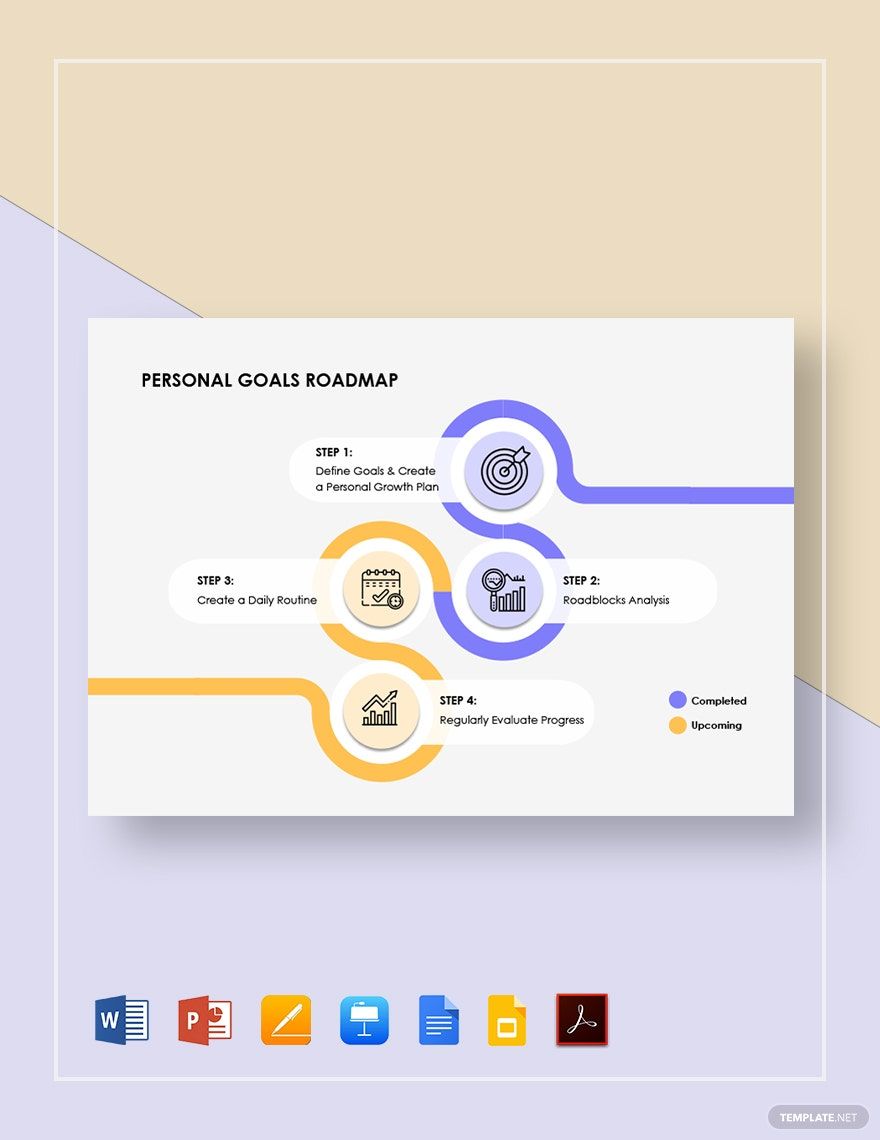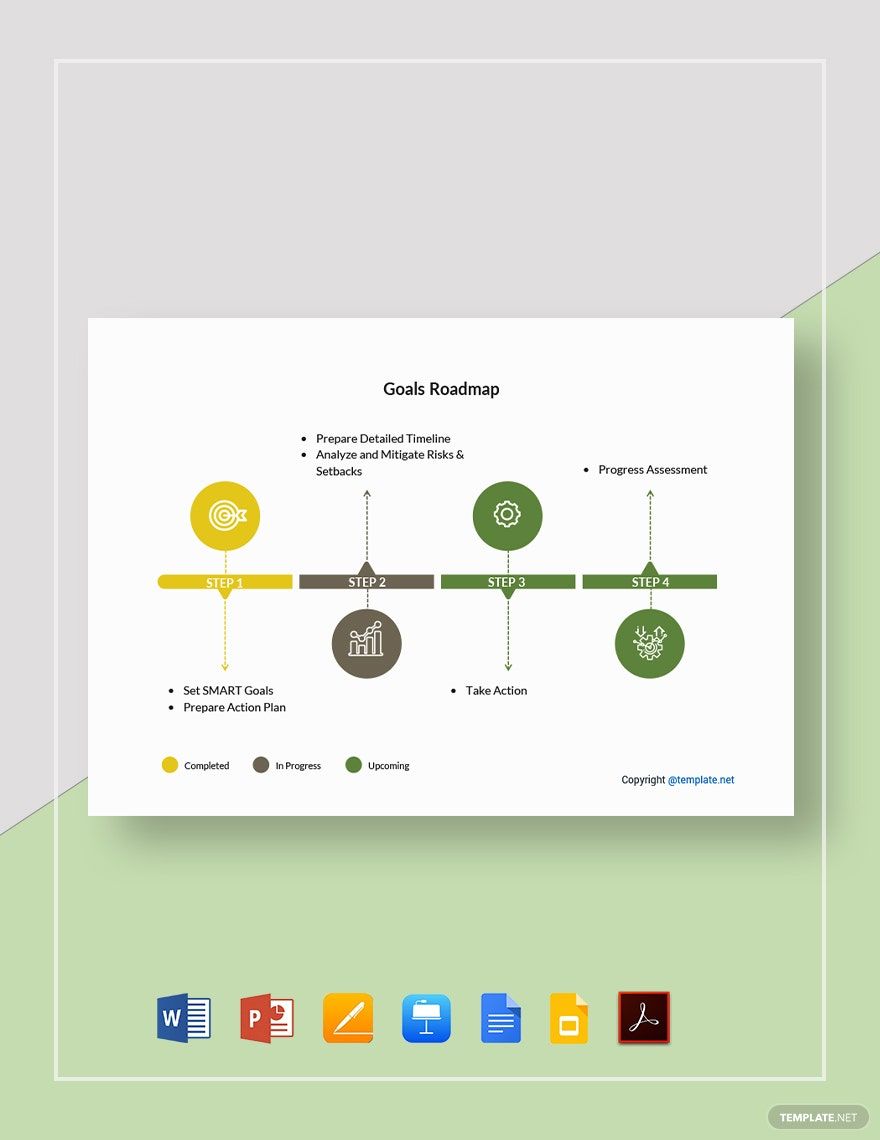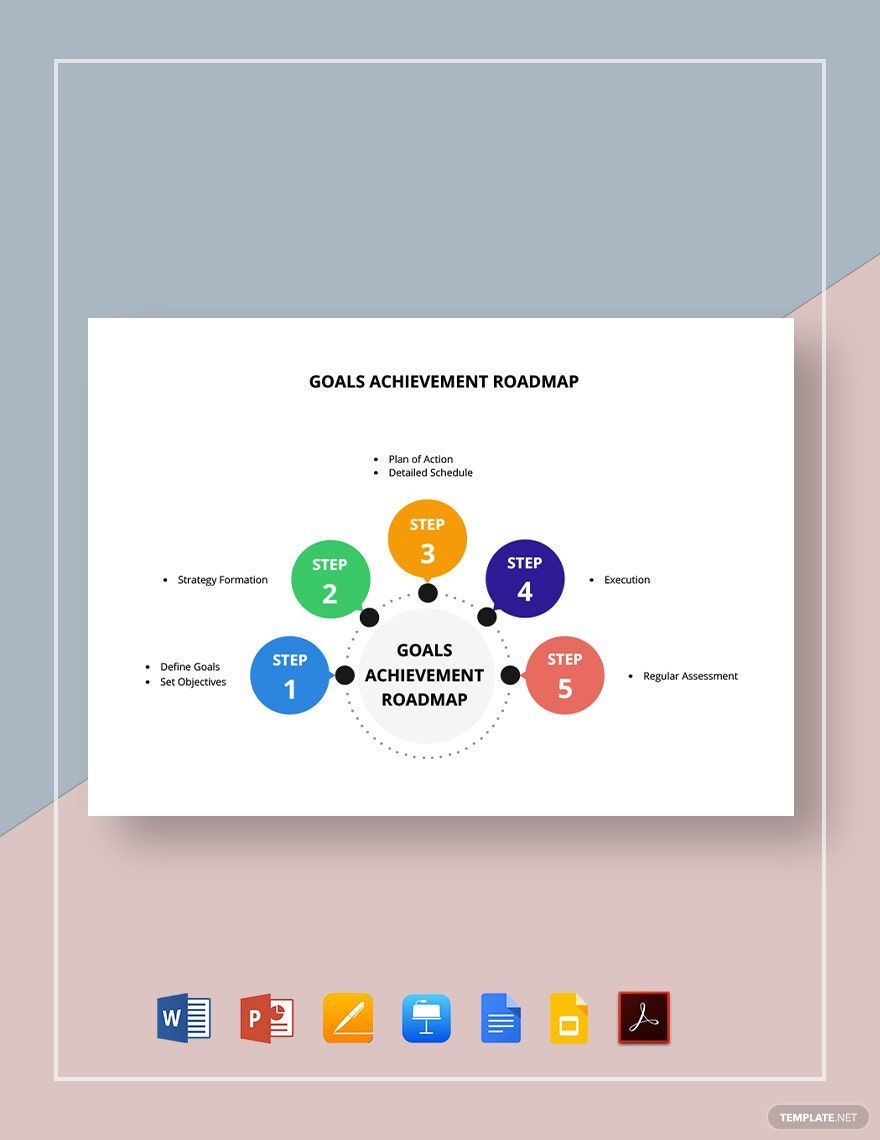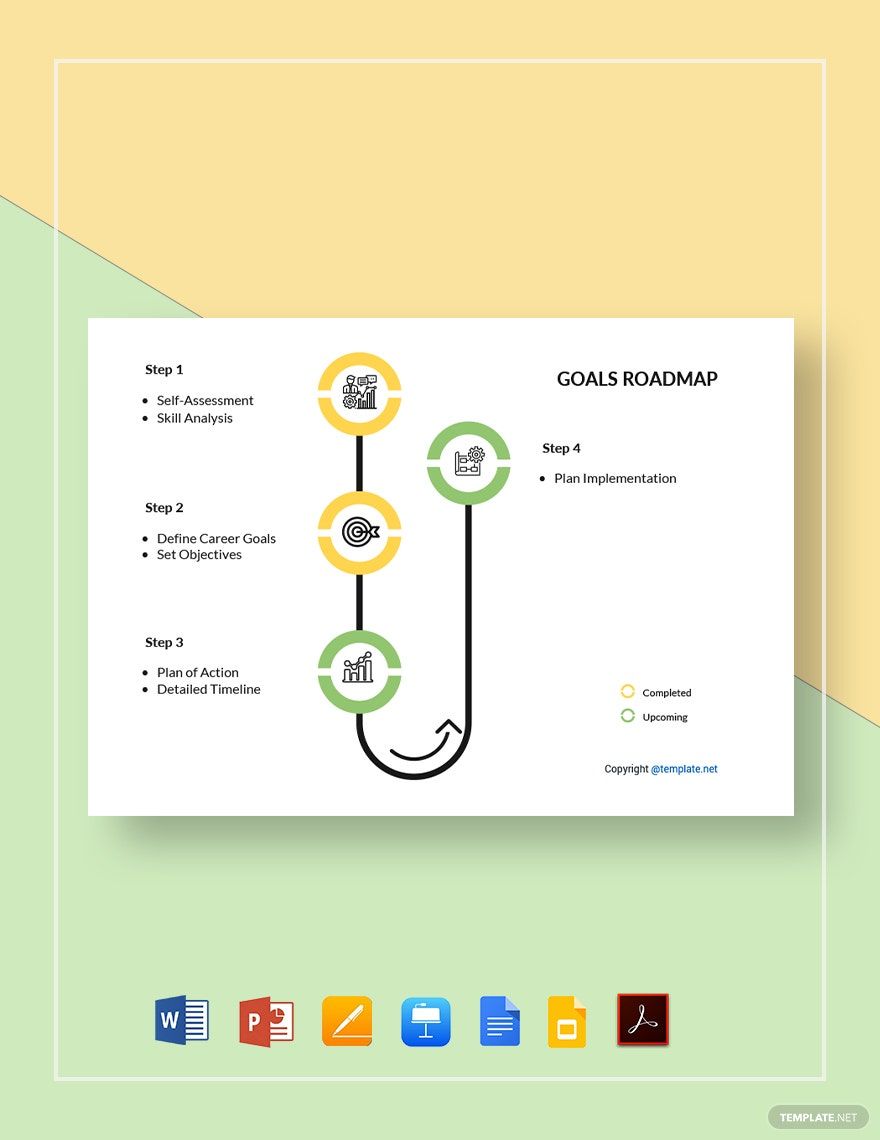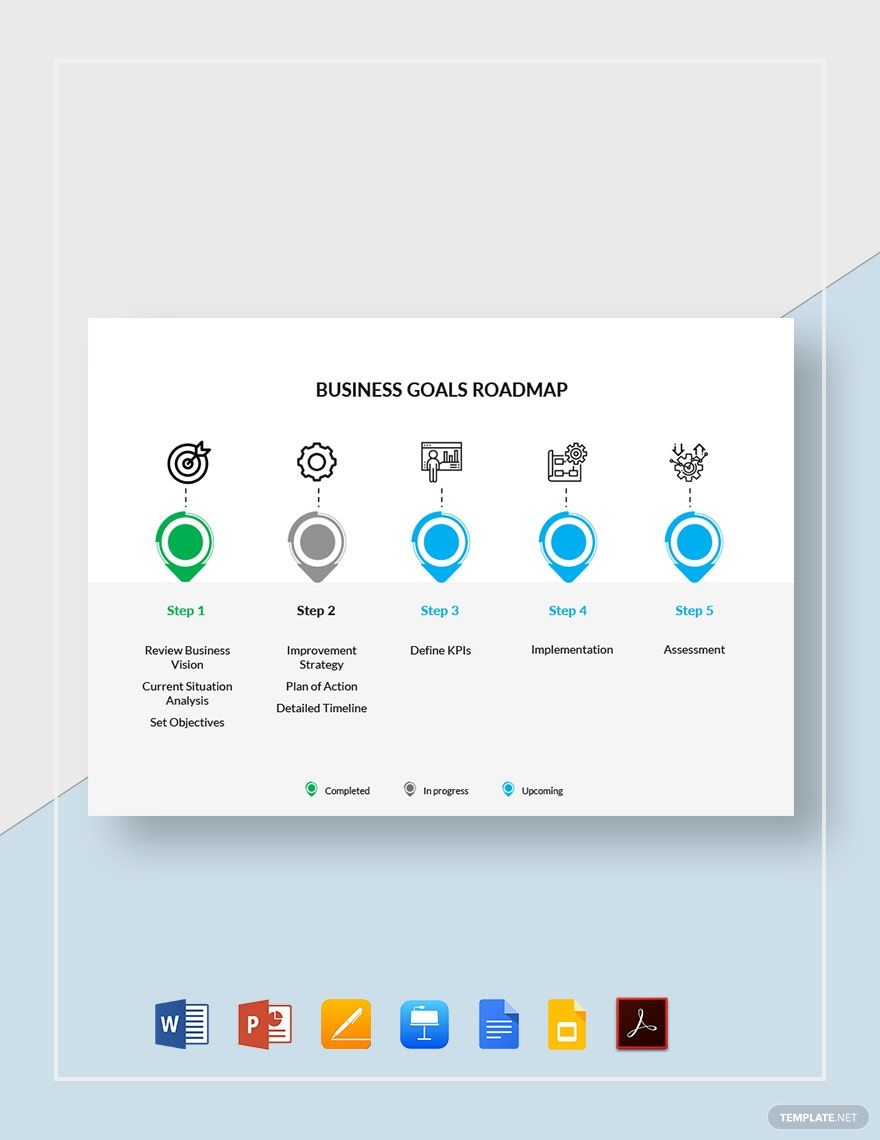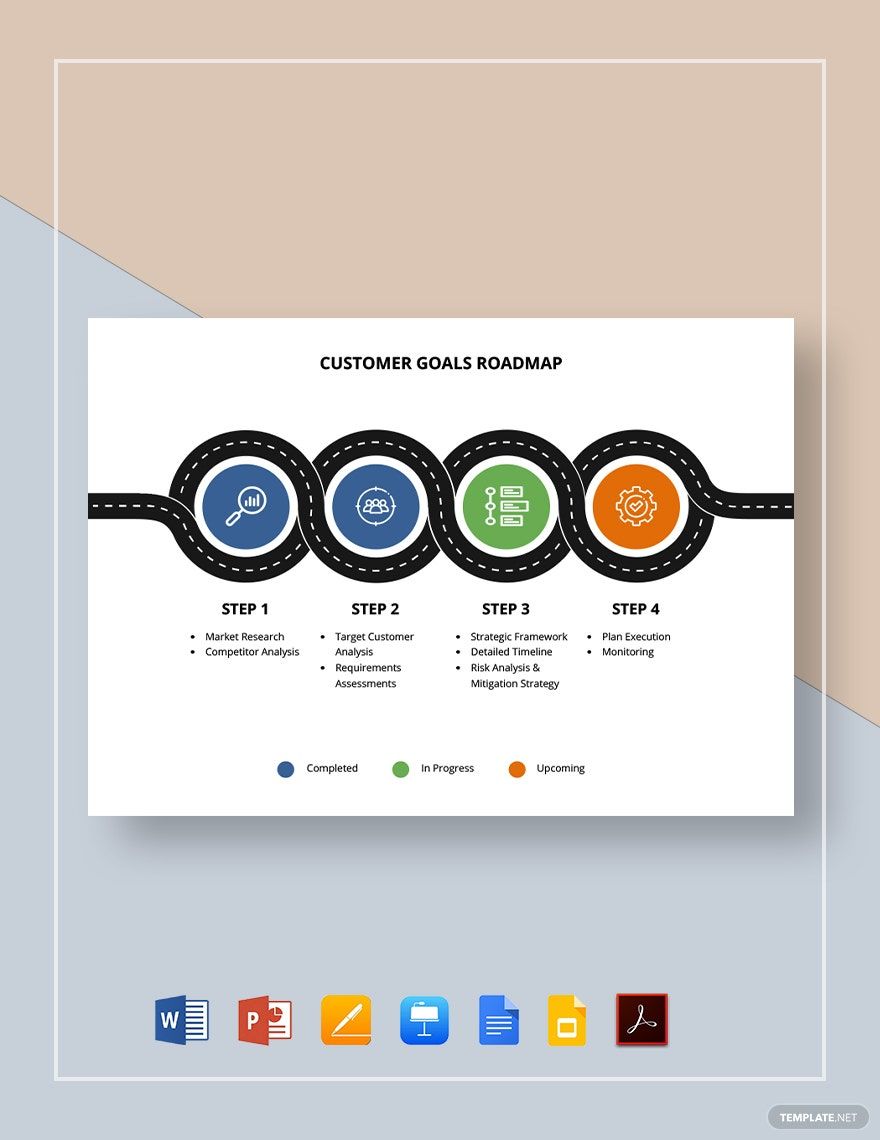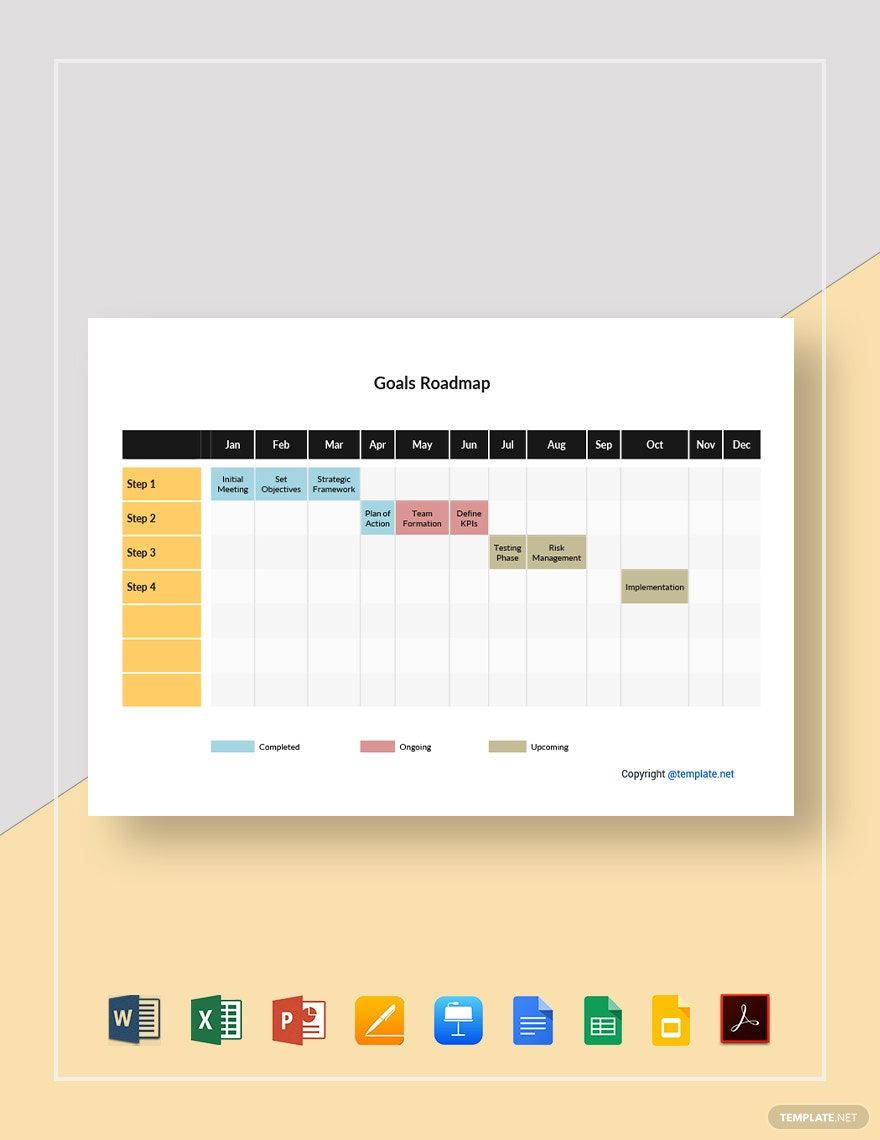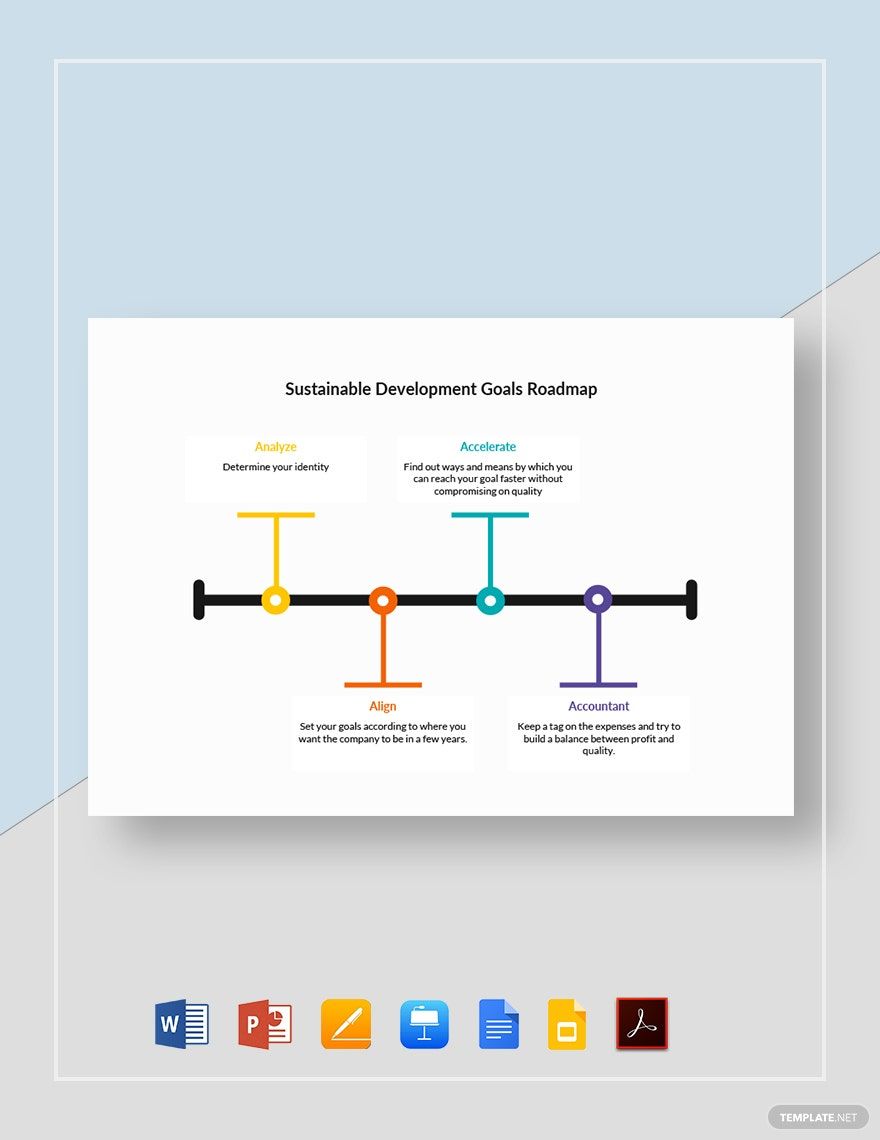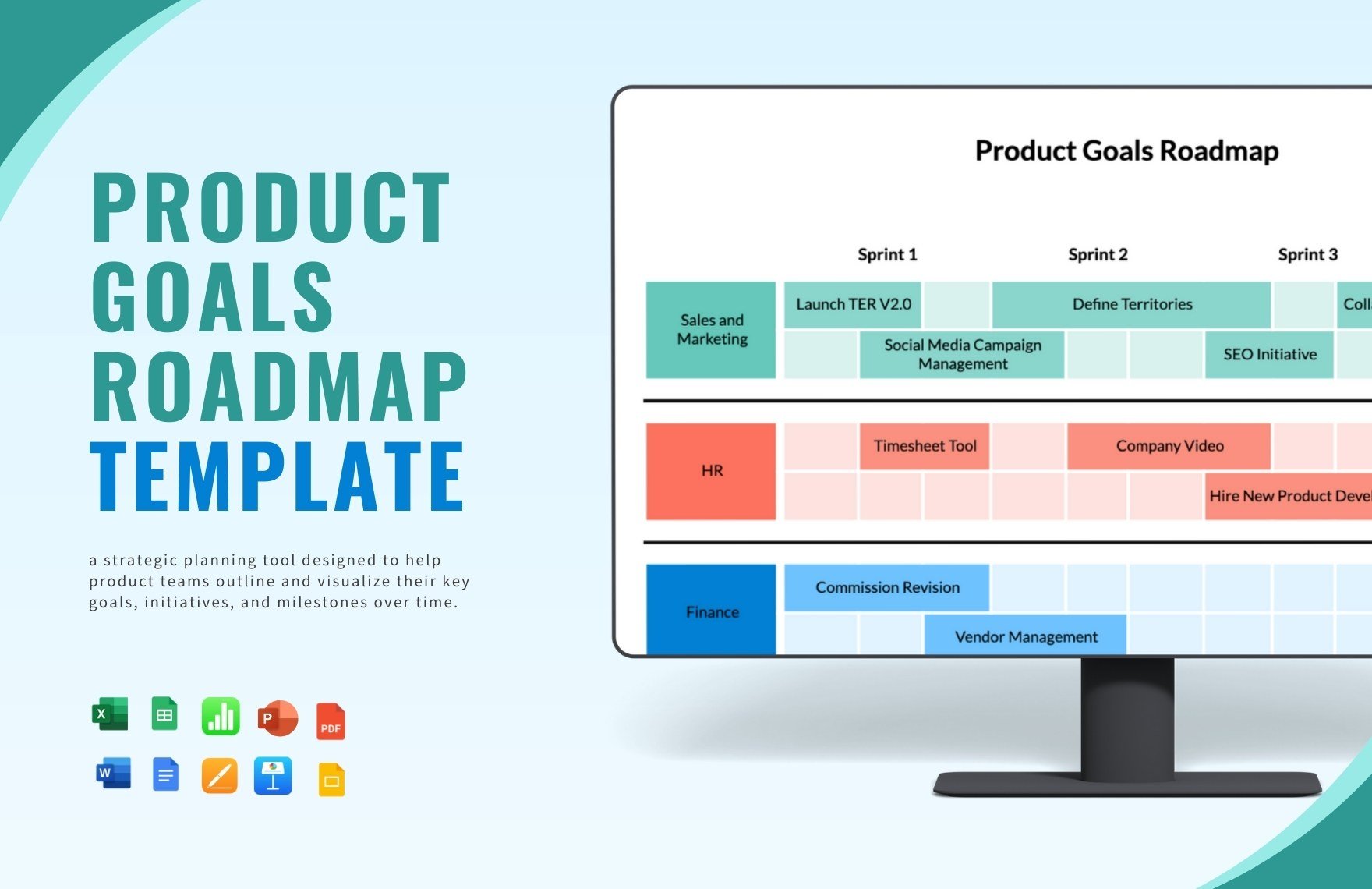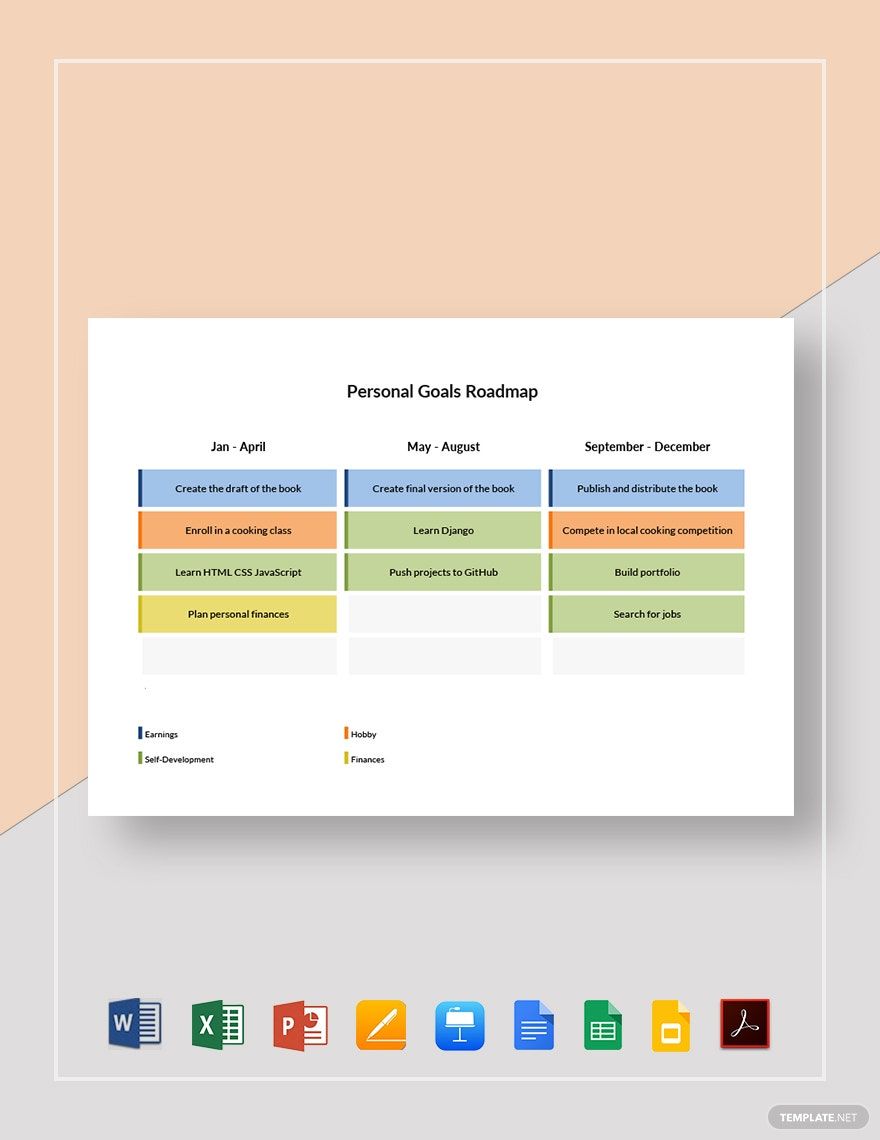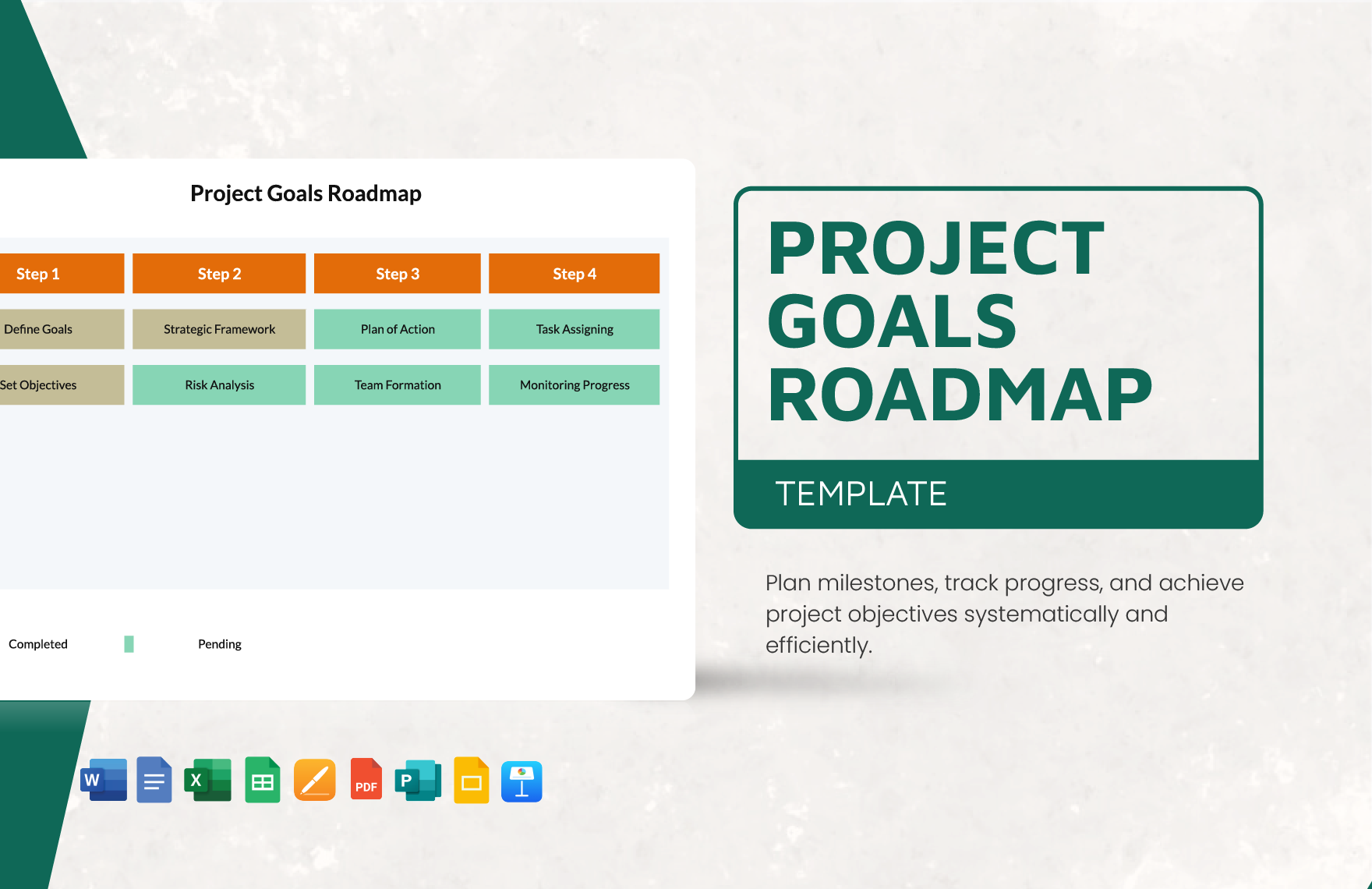When you have a goal, whether it’s personal or business, having a clear roadmap will help you achieve it. But it may be complicated to create a strategic roadmap that matches your needs. That’s why you need our wide array of ready-made Goals Roadmap Templates in Google Slides. Collaborating with others online is easy with this web-based software. No matter what device you’re working on, you can access and customize the template online. We’ve already incorporated useful content on each template that will benefit you. Are you determined to achieve your life goals? Then grab our template now to pave your way to success!
Goals Roadmap Templates in Google Slides
Get creative with customizable, professional-quality goals roadmap templates in Google Slides. Free to download and perfect for your needs. Download now!

Get Access to All Roadmap Templates

How to Create a Goals Roadmap in Google Slides
According to a Harvard Business study, 14% who set their goals are 10 times more likely to succeed compared to those who don’t. A further study reveals that 3% of the 14% who wrote their goals are 3 times more successful. And this proves that creating a goal roadmap is an effective method. So write your goals and create a roadmap to achieve them!
Because we want to assist you in reaching your goals, we have made a compilation of what you need to remember when creating goals roadmap.
1. Write Out Your Goals
You should be drafting your personal or business goals as early as now. If you do this, you will know which patch to take. But keep in mind that your goals should be specific, measurable, action-oriented, results-oriented, and time-sensitive.
2. Design Your Action Plan
Determine what steps you need to take in order to achieve your goals. Create an action plan ahead of time so you can still gauge if they’re feasible or not. Provide each description for each task or responsibility that needs to be done.
3. List the People Who Can Help You
You’ve probably heard the saying, “two heads are better that one.” So, in achieving your goals, you have to include those people who are goal-oriented like you when you design your goal-setting roadmap. Deployment of people to help you will hasten the attainment of your personal or career goals.
4. Identify Hindrances
If you know what could be a hindrance to achieving your goals, you can plan what you need to do in advance in order to reduce or avoid problems. Contingency planning will be your next step after you identify hindrances. Think of the best prevention methods and list them down.
5. Present Your Goals Roadmap
You can use various presentation techniques to illustrate your roadmap. There is various software available that allows you to do it such as PowerPoint (PPT), Excel, Word, and Google Slides. Use the one that you're comfortable with.
Frequently Asked Questions
What is a goals roadmap?
The road to success is never simple; you will meet obstacles along the way. A goal roadmap is simply an illustration of your goals. It’s designed to keep you on track of your goals, be it for school, career, or business.
What is the difference between a roadmap strategy and an agile methodology?
A roadmap strategy is a visualization of your long-term goals and your action plan to achieve them, while agile methodology is a process using in project management wherein a project is divided into various stages with the collaboration efforts of different teams.
What is a product roadmap?
A product roadmap is a strategic method that’s very important in project development. Its main purpose is to match the product vision to the company’s goals and objectives.
What are the types of a product roadmap?
The different types of product roadmap are the following:
1. Now-Next Later Roadmap
2. Goal-Oriented Roadmap
3. Theme-Based Roadmap
4. Feature-Based Roadmap
5. Strategy Roadmap
6. Technology Roadmap
7. Portfolio Roadmap
8. Release Roadmap
9. Market Roadmap
What are the key features of a strategic product roadmap?
The key features of a strategic product roadmap include:
1. Product Vision
2. Strategy
3. Goal
4. Initiative
5. Feature
6. Time-Framers
7. Status Markers
8. Metrics
